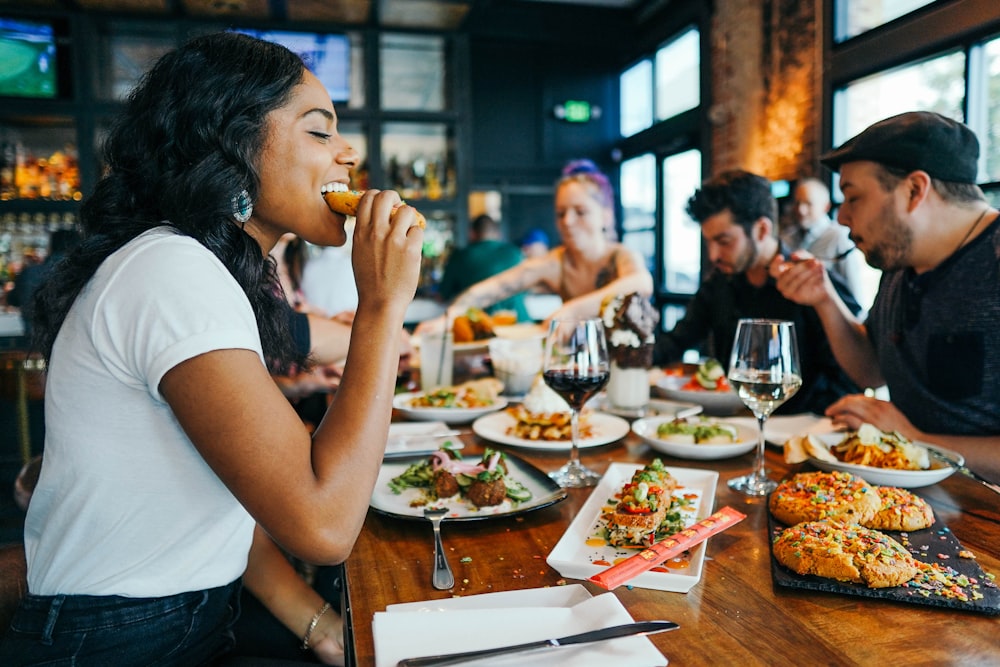How long can food sit out after cooking? People nowadays are so busy that we’ve all likely left some food out in our lifetime. So, please don’t be embarrassed about that burrito you left at home while rushing to work, because trust me, we’ve been there. So how long can we leave out our meals?
Generally, two hours is the limit for most perishable foods, but it still depends on the situation. In this post, I discussed how long you could leave out cooked food in detail, if reheating is possible, and more.
So, How Long Can Food Sit Out After Cooking?
If you leave cooked food sitting at temperatures between 40°F and 140°F, it’s only safe to consume within two hours. Keep in mind that this includes the moment you leave your food on the table or kitchen sink. Either way, there’s a good reason behind this strict two-hour guideline.
This time is what the United States Department of Agriculture (USDA) dubs the “Danger Zone.” And going beyond this can be harmful to your health. After all, it’s the range where bacteria grow, making the forgotten food dangerous.
Moreover, it’s so hospitable that it lets a single bacterium grow into over 2 million bacteria in just 7 hours! And when ingested, these bacteria can make you severely sick.
Here are perishable foods you should never leave out beyond two hours.
- Meat
- Seafood
- Tofu
- Poultry
- Pasta
- Rice
- Fresh vegetables and fruits
- Peeled or cut vegetables and fruits
- Dairy products
So whether you’ve made dinner or ordered out, stash the food inside your fridge within two hours. Doing so saves your food from bacteria growth, keeping you healthy—and full!
However, there’s one exception to this strict guideline. And that’s if the food is sitting in temperatures over 90°F, you can only leave it for a maximum of one hour! That’s because the hotter the environment is, the more bacteria thrive.
That’s why the next time you go out on a picnic on a hot day, keep this in mind!
But What About My Groceries?
The guideline set out by the USDA of two hours still applies to your groceries. That’s why if you ever go food shopping, always leave the market as your last stop before going home. Doing this keeps your groceries from the Danger Zone.
Additionally, I recommend storing perishable foods on the back seat instead of your trunk. After all, the back seats have access to air conditioning, exposing your food to a cooler environment. And this, in turn, prevents bacterial growth.
You can also bring a cooler for a safer alternative.
What Happens If I Eat Cooked Food Left Out for Too Long?
If you don’t follow the two-hour limit, you’re prone to developing a foodborne illness. And anyone who’s been a victim before should know why it’s best avoided. It’s unpleasant, painful, and lasts for too long!
Common symptoms of most foodborne illnesses are diarrhea and stomach pain. Accompanying these are cramps, fever, vomiting, and fatigue.
So you can see why I strongly recommend following the two-hour guideline by the USDA. After all, most foodborne illnesses are linked to the consumption of leftover foods.
Can Reheating Save My Leftovers?
Although some sources say that reheating food can kill bacteria, this isn’t the case. After all, not all bacteria die in severe heat. For instance, Staphylococcus aureus can develop a heat-resistant toxin that heat can’t penetrate. So, reheating can’t save your leftovers.
However, it can still work for other bacteria like Clostridium botulinum. But it’s still a gamble, so I don’t recommend reheating. It’s better to discard food that sat out for too long. After all, health should be your priority.
When to Toss Different Foods Away After Cooking
- Egg. Eggs can only be left out for two hours, whether raw, cooked, or boiled.
- Cheese. Different variations have different time limits. But, generally, leaving cheese out is safe—for a specific time. You can leave some cheese out for 12 hours! However, practice caution as some cheeses are more perishable than others.
- Mushrooms. Raw mushrooms can stay at room temperatures for up to a day without posing any health risks. However, it isn’t advisable to leave them for more than two hours once you cook them.
- Bell peppers. Raw or uncooked bell peppers can stay fresh for up to five days. However, they can’t last longer than two hours after you cook or cut them up.
- Bread. Soft-crusted bread can stay at room temperatures for up to a week. Meanwhile, hard-crusted bread such as baguettes can only stay bacteria-free for two days.
- Butter. You can leave some butter at room temperature for up to two days, and it’d still be free of bacteria. Why? That’s because butter mainly has low lactose levels and high amounts of saturated fat. And most bacteria don’t thrive in this kind of environment.
- Lunch meats. Cut sliced deli meats can’t last longer than two hours at room temperature.
- Greens. Greens can’t survive at room temperature, whether you leave them cooked, boiled, or raw. These include greens like cabbage, spinach, kale, and romaine lettuce.
- Fruit pies. After the initial preparations, fruit pies can stay at room temperature for two to three hours. Beyond this poses many health risks, such as diarrhea and food poisoning.
Frequently Asked Questions
Q: What can happen to my leftovers if I leave them overnight?
A: If you leave foods at room temperature overnight, this can lead to bacterial growth. So even though your leftovers may look and smell great, discard them. Not complying can lead to vomiting, diarrhea, upset stomach, and more.
Q: Can I eat cooked food left for three hours?
A: Consuming cooked meals that sit out too long can harm your health. After all, going beyond the two-hour limit leads to excessive bacterial growth.
Q: What should I do about foods left in the Danger Zone?
A: Although it might be a waste, throwing out cooked food left in the Danger Zone is your best bet. Doing so prevents you from getting foodborne illnesses and contaminating other foods.
Q: Is reheating cooked food recommended?
A: Depending on how you cooled the cooked food, reheating may save it. For instance, you’ll need to reheat food cooling from 135°F to 41°F at extreme temperatures of 165°F and beyond. However, I don’t recommend doing this as it might not kill all the bacteria.
Final Words
How long can food sit out after cooking? Most cooked foods can be safe to eat after being left out at room temp for two hours. And adhering to this is your safest bet. After all, it’s based on a scientific study into the growth of pathogens in food. So although some leftovers might be safe to consume beyond the two-hour limit, don’t.
So, never eat food that sat out for too long—no matter how tempting tacos for breakfast are.


